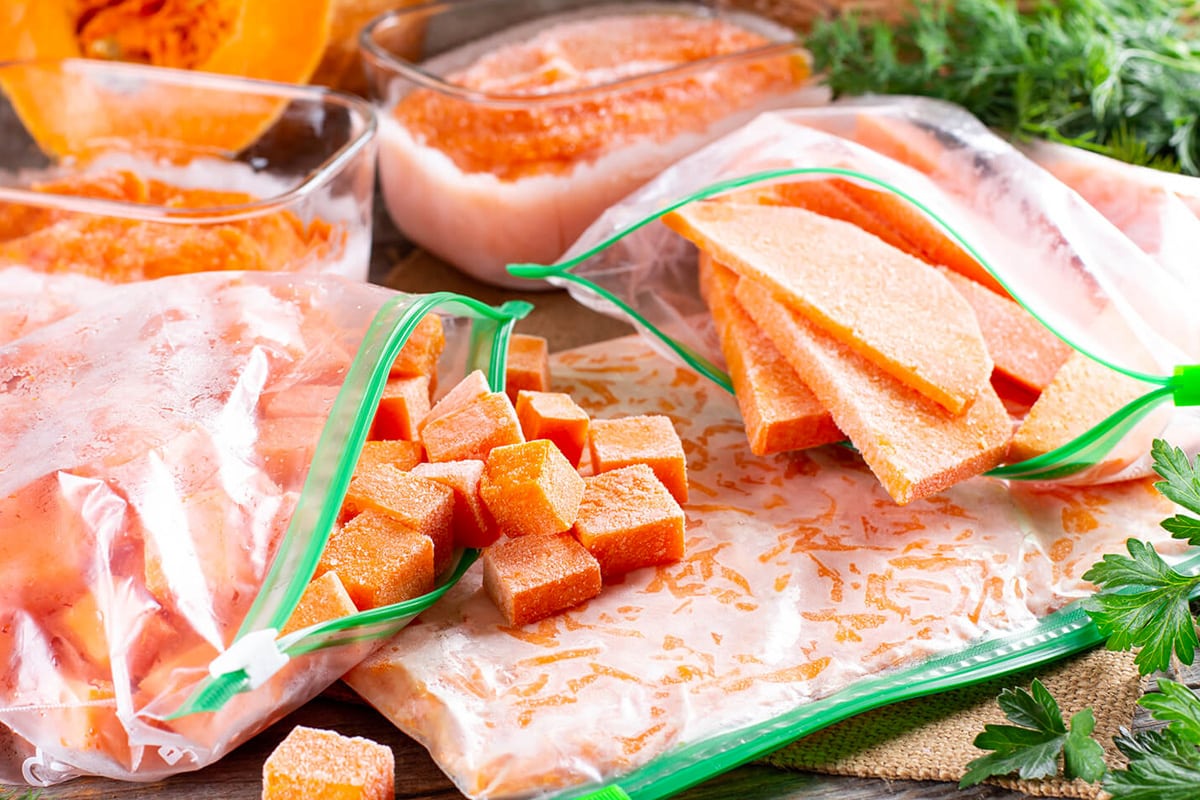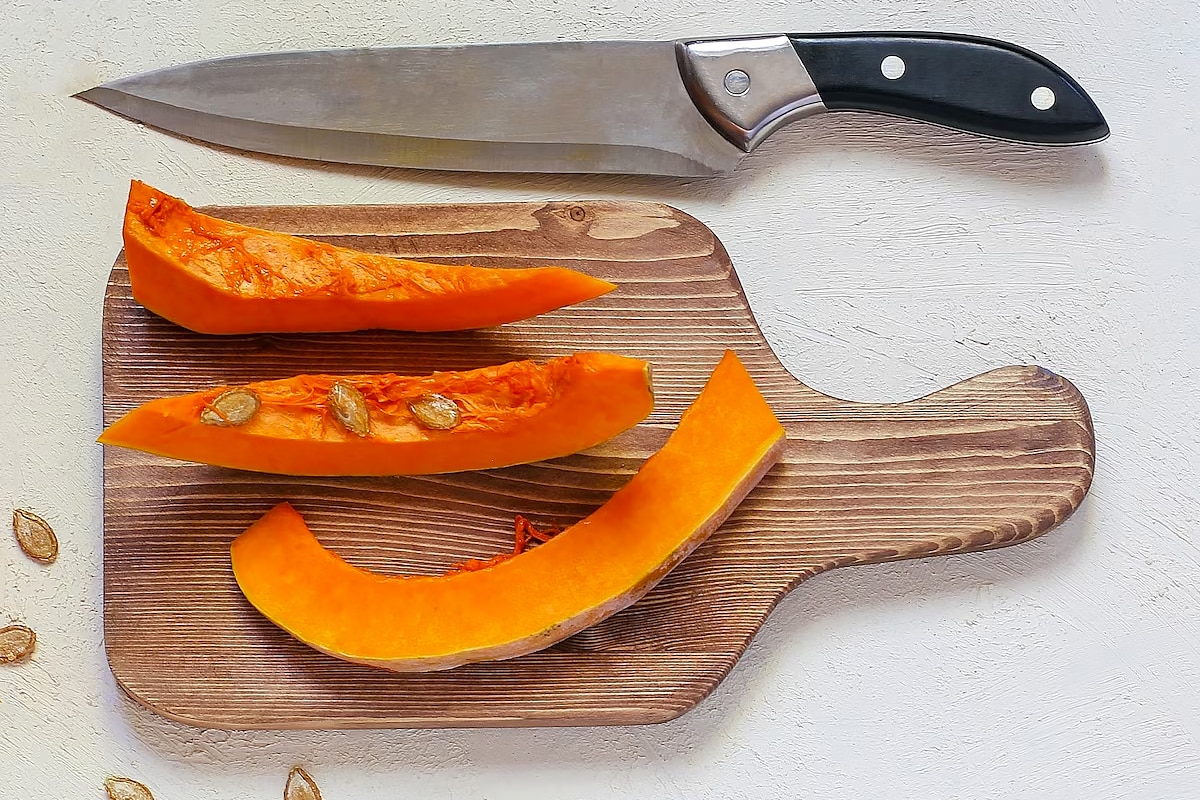Are you tired of blanching your squash before freezing it? It’s a time-consuming process that can make meal prep feel like a chore. But should you blanch the squash or you can cut the corner and freeze it raw? Let’s find out!

Oh, darling, freezing squash without blanching is a bit of a tricky subject! You see, blanching helps to preserve the color, texture, and flavor of the squash when it’s frozen, so it’s generally recommended. However, if you’re in a pinch and don’t have time to blanch the squash, you can still freeze it without sacrificing too much quality.
Why Blanching Squash Before Freezing is Recommended
You’ve probably seen many recipes that recommend blanching squash before freezing it. But why is it so important? Let’s take a closer look at what blanching is and why it’s recommended for freezing squash.
What is Blanching and Why is it Important?
Blanching is a process of quickly boiling vegetables in water for a short period of time, then immediately cooling them down in ice water. This process helps to stop enzyme activity in the vegetables, which can cause them to continue to ripen and deteriorate even while frozen.
Blanching also helps to remove any dirt or bacteria that may be on the surface of the vegetables. When it comes to freezing squash, blanching is particularly important because squash contains enzymes that can cause it to become mushy and lose its flavor and texture over time.
Blanching helps to preserve the quality of the squash and ensures that it stays fresh and tasty for longer.
What Happens if You Don’t Blanch Squash Before Freezing?
If you skip the blanching step and freeze squash raw, you may end up with a less-than-desirable result. The enzymes in the squash can continue to break down the vegetable even while it’s frozen, causing it to become mushy and lose its flavor and texture.
This can make the squash less appealing to eat and may even result in food waste.
In addition, freezing raw squash can also lead to freezer burn, which can affect the taste and texture of the vegetable. Freezer burn occurs when moisture in the vegetable evaporates, leaving behind dry, tough spots on the surface.
Overall, while it may seem like an extra step, blanching squash before freezing is well worth the effort. It helps to preserve the quality of the vegetable and ensures that it stays fresh and tasty for longer.
Freezing Squash Without Blanching: The Process

Are you tired of blanching squash before freezing it? You’re not alone! Blanching can be a hassle and can sometimes affect the texture of the squash. Luckily, freezing squash without blanching is a quick and easy alternative. Here’s how you can do it:
Preparing the Squash for Freezing
Start by washing the squash and cutting off the ends. Then, slice the squash into rounds or cubes, depending on your preference. Make sure to remove any seeds or stringy bits.
Next, lay the squash out in a single layer on a baking sheet lined with parchment paper. Place the baking sheet in the freezer and let the squash freeze for a few hours, until it is completely frozen.
Packaging and Storing the Squash
Once the squash is frozen, transfer it to freezer-safe containers or bags. Be sure to label the containers with the date and type of squash. You can also add any seasonings or herbs at this point, such as garlic or thyme.
Store the squash in the freezer for up to 8 months. When you’re ready to use it, simply thaw the squash in the refrigerator overnight or in a bowl of cold water for a few hours.
The texture may be slightly softer than if I had blanched it first, but it still tastes delicious and works well in recipes like soups, stews, and casseroles.
Tips and Tricks for Freezing Squash Without Blanching
How to Prevent Freezer Burn
Freezer burn can be a problem when freezing squash without blanching. To prevent it, make sure you use high-quality freezer bags or containers that are designed for freezing. Remove as much air as possible from the bag or container before sealing it, as air can cause a freezer burn.
Also, you should remove all the water drops from the squash as this water will crystalize and will break the texture of the squash during the freezing.
How to Avoid Squash from Turning Mushy
Another common problem when freezing squash without blanching is that it can turn mushy when thawed. To avoid this, choose firm, fresh squash that is free from blemishes or soft spots. Wash and dry the squash thoroughly before slicing it into your desired shape or size.
Blot the squash with a paper towel to remove any excess moisture before freezing.
Overall, freezing squash without blanching is a great way to preserve your summer harvest. With these tips and tricks, you can ensure that your frozen squash stays fresh and delicious for months to come.
Should You Thaw It First?
It is generally recommended to thaw squash before cooking it. This allows the squash to cook evenly and ensures that it reaches the desired level of doneness. Thawing can be done by transferring the frozen squash from the freezer to the refrigerator and allowing it to thaw overnight, or by using the defrost function on a microwave.
Once the squash is thawed, it can be cooked using the desired method, such as roasting, sautéing, or boiling.
How to Thaw It Properly?
To thaw squash, you can transfer it from the freezer to the refrigerator and allow it to thaw slowly overnight. This is the preferred method because it prevents the squash from becoming too soft or mushy during the thawing process.
Once the squash is thawed, you can cook it using your preferred method. Roasting is a popular option that brings out the natural sweetness of the squash and results in caramelized edges.
Overall, thawing squash before cooking it is an important step that ensures even cooking and optimal texture. So be sure to plan ahead and allow enough time for the squash to thaw before you start cooking.
🤔 Answering Your Questions:
Can You Freeze Different Types of Squash?
Yes, you can freeze different types of squash, such as zucchini, yellow squash, and butternut squash. However, the texture and flavor may vary depending on the type of squash and how it’s prepared. Some types of squash, such as spaghetti squash, may become mushy when frozen, so it’s important to test the squash before freezing a large batch.
How Do You Defrost Frozen Squash?
To defrost frozen squash, place it in the fridge overnight or thaw it in the microwave using the defrost setting. It’s important to use thawed squash within a few days and not refreeze it once it’s been thawed. Additionally, the texture and flavor of the squash may be affected by the freezing and thawing process.
Can You Freeze Cooked Squash?
Yes, you can freeze cooked squash. However, the texture and flavor may be affected by the freezing and thawing process. It’s best to freeze cooked squash in small portions, so you can easily thaw only what you need.
Can You Freeze Whole Squash?
Yes, you can freeze whole squash. However, it’s important to remove the seeds and pulp before freezing to prevent them from becoming mushy or affecting the flavor of the squash. Whole squash may also take longer to thaw than sliced or cubed squash.
How Do You Prevent Freezer Burn on Frozen Squash?
To prevent freezer burn on frozen squash, make sure it is stored in an airtight container or freezer bag. Squeezing out any excess air before sealing the bag can also help prevent freezer burn.

Leave a Reply